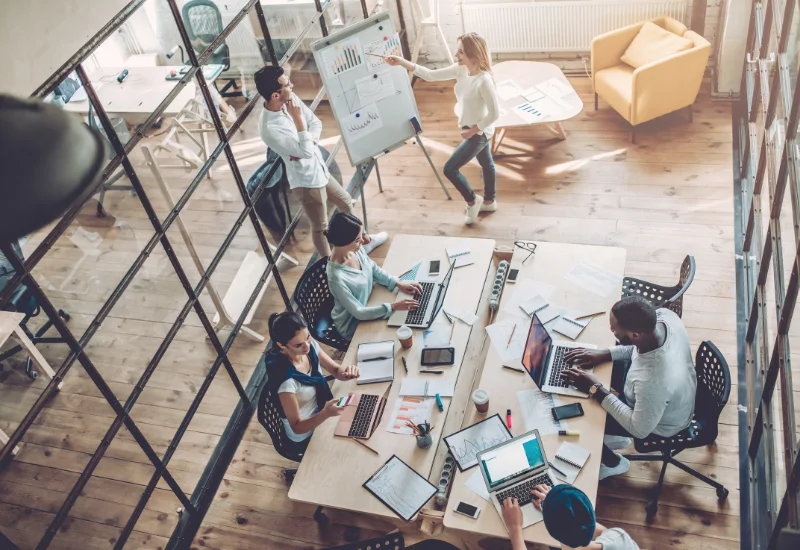
Jun 03, 2025
Take a tour of the most innovative office design trends that are revolutionizing workplaces around the world. As businesses welcome employees back to the office after long periods of remote work, it is clear that we are in need of vibrant and inspiring spaces. From nature-inspired designs to technology integration and inclusivity, these transformative trends boost creativity, productivity, and overall job satisfaction.
Written by Mary - Written: May 12, 2023
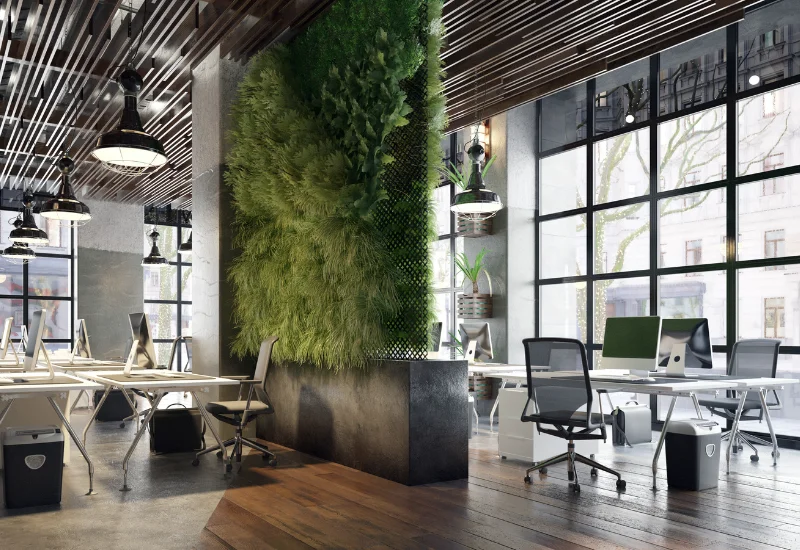
Are you tired of the boring and monotonous office spaces that you have worked in?
Do you find yourself working from home just to escape the dullness of your workplace?
Well, you are not alone!
The current state of workspaces is uninspiring and lacks creativity, leading to disinterest among employees. However, with the return of employees to workplaces after a long period of remote working, it is essential to create a vibrant and innovative office design.
Innovative office designs are the need of the hour, and it’s high time that companies invest in them. These designs not only make the workspace look visually appealing but also provide practical benefits such as improved productivity, job satisfaction, and employee retention. Innovation is the key to a dynamic and engaging office space.
So, why are innovative office designs important? Well, for starters, they provide employees with an environment that promotes creativity and collaboration. They also allow for better space utilization and efficient workflows. Additionally, innovative designs aid in the implementation of new technology, leading to better efficiency and communication.
It’s time to break out of the traditional office designs and embrace creative and inventive ways of working. Let’s explore some of the latest innovative office design trends that are attracting employees back to their workspace.
Here are 5 office design trends that boost inspiration and creativity:
It’s no secret that our environment affects our behavior, mood, and productivity. And when it comes to workplaces, the design of the environment holds an immense impact on employee engagement and performance. With the global pandemic slowly transitioning from its peak, luring employees back to their workspaces has become an imperative for businesses. While remote work has its perks, it’s safe to say that nothing beats having a workspace that fosters productivity and employee wellbeing.
Innovative office designs that cater to employees’ mental and physical needs are essential in today’s work culture. Nature-inspired workspace design is one trend that has gained immense popularity recently. Biophilic design, which emphasizes connecting people to nature, is at the core of nature-inspired workspace design. Spaces designed with biophilic principles prioritize natural elements such as plants, water bodies, and natural light.
A study from Terrapin Bright Green suggests that nature-inspired designs increase productivity levels by 8% to 12%. Incorporating green spaces, natural light, and nature-inspired color schemes in workspaces enhances mood, creativity, and focus. Some companies are now building entire biophilic office spaces, one such example being Amazon’s Spheres in Seattle.
In addition to the aesthetic appeal, nature-inspired workspaces have tangible health benefits. Plants in the office have been linked to reduced stress levels and improved air quality, leading to fewer sick days. People are generally happier in green and bright environments, which boosts engagement levels, ultimately leading to higher performance. Who knew a touch of greenery could be the key to a successful workspace?
Flexible workspace designs are another innovative trend that can encourage employees to return to their workspaces. Activity-based workstations and collaborative areas encourage movement within the workplace and allow freedom in selecting the optimal workspace based on the task. Such dynamic workspaces can be personalized for employees’ preferences, ultimately boosting productivity.
Incorporating spaces for private focus such as soundproof booths and flexibility in furniture and equipment also cater to individuals who need complete concentration. With flexibility being at the forefront of such workspaces, companies can reduce the disruptions that arise from hierarchical thinking, aligning themselves with a more democratic work culture. To summarize, innovative office designs cater to employees’ modern needs, and it’s vital for businesses to invest in them. People want workspaces that encourage focus, creativity, and most importantly, their overall wellbeing. Nature-inspired and flexible workspace designs are just two such examples that can boost engagement levels, performance, and employee satisfaction.
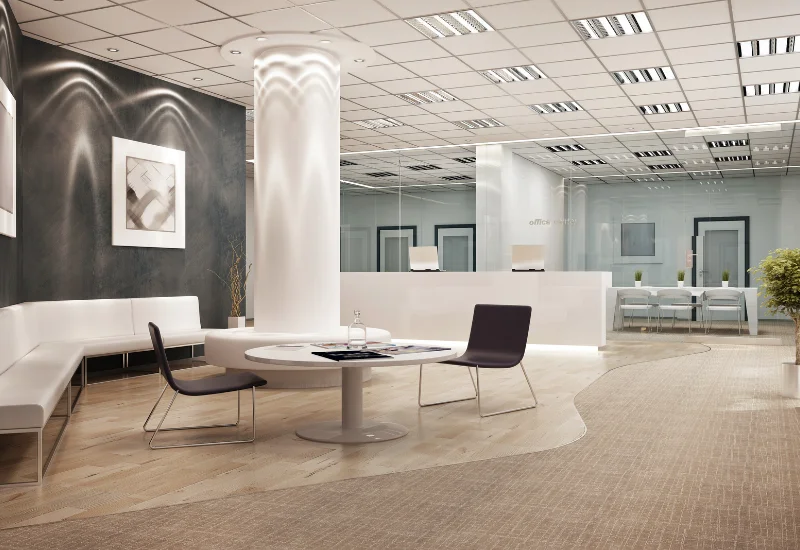
The pandemic has forced most of us to work from home, but with the vaccine rollout in full swing, employees are slowly making their way back to the office. And while some are eager to return to their old workspace, others are hesitant about coming back to the office environment. That’s why employers need to pull out all the stops to make their workspace more attractive to employees.
One of the key innovations in office design is the flexible workspace design. Traditionally, workplaces were set up with assigned seating for each employee, and employees were expected to work at that same spot every day. With the advent of a flexible workspace design, organisations move towards a more activity-based workspace. Activity-based workstations empower employees to choose a space that is more conducive to their work nature, such as individual workstations, collaborative spaces, or meeting rooms.
Collaboration areas are crucial for employees to bounce ideas off each other. These spaces should be designed with a combination of seating options, ranging from chairs and beanbags to couches and bar stools. A lounge area can also help employees unwind, relax and refuel their creative battery.
Spaces for private focus are also essential; some work requires a lot of concentration, and these quiet zones help employees avoid distractions and maintain productivity. Private meeting areas also provide employees with a private space ideal for confidential discussions with their clients or colleagues.
Furniture and equipment that lend greater flexibility are crucial. Swivel chairs that can be turned into standing desks, height-adjustable tables, and monitor arms are a few examples that encourage employees to work comfortably.
Finally, flexible workspace design offers a range of benefits that cannot be ignored. When employees choose a place to work, they feel more in control of their lives, positively impacting their well-being and, in turn, their work satisfaction. It has also been shown to improve employee motivation, engagement, and productivity. Employees feel more motivated and inspired as they can quickly move to a location that fits their mood or work an ergonomic setup to complete their task.
In conclusion, the flexible workspace design is an innovative approach to the traditional office space that offers many benefits to employees and employers alike. It acknowledges that one size does not fit all, and instead provides employees with a diverse range of work options maximising engagement and productivity. Whether it’s a private meeting room, collaborative space or a standing desk, a flexible workspace design caters to the needs of employees, and in turn, holds the potential to foster a more productive workforce.
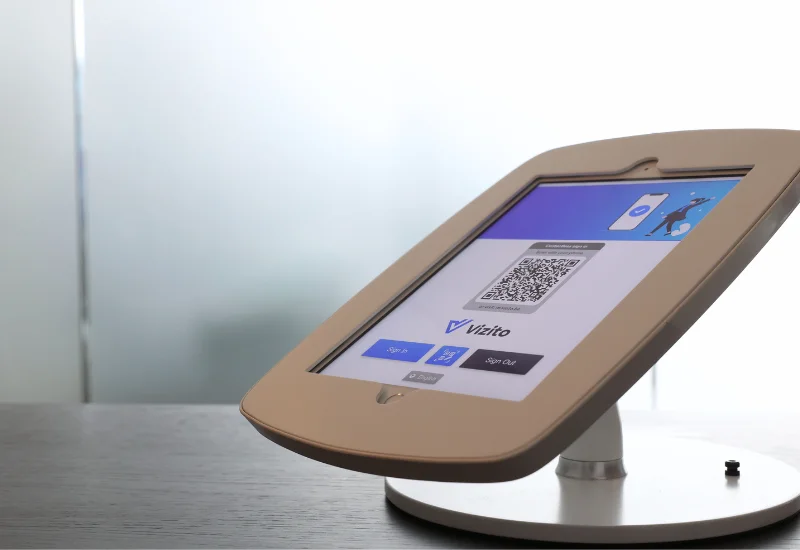
Gone are the days when a working computer and a printer defined a functional office. Today, technology has become a core component of office design, with companies integrating cutting-edge devices to create an interactive and more engaging workspace.
Wireless connectivity has become a necessity in today’s offices. No more battling the labyrinth of cords. Employees can now work from anywhere within the office, thanks to wireless devices, including printers, internet connectivity, and wireless charging pads.
Innovative audiovisual systems have made meetings more interactive and efficient. Forget about the dusty old projector; today, offices are equipped with high-resolution LED screens, smart whiteboards, and state-of-the-art multimedia systems that offer a more engaging and captivating meeting experience.
Implementing a visitor management system can modernize the reception area. The system can make the check-in process quick and hassle-free. Visitors can pre-register and complete the necessary formalities beforehand, improving the overall experience. It would also ensure tighter security measures at the premises.
A technologically advanced workplace shows that the company is up-to-date with the latest trends in the industry. It also provides an excellent first impression to potential recruits and clients. Technology-integrated workspace design, including a visitor management system, has become a must-have for forward-thinking companies that value innovation, creativity, and productivity.
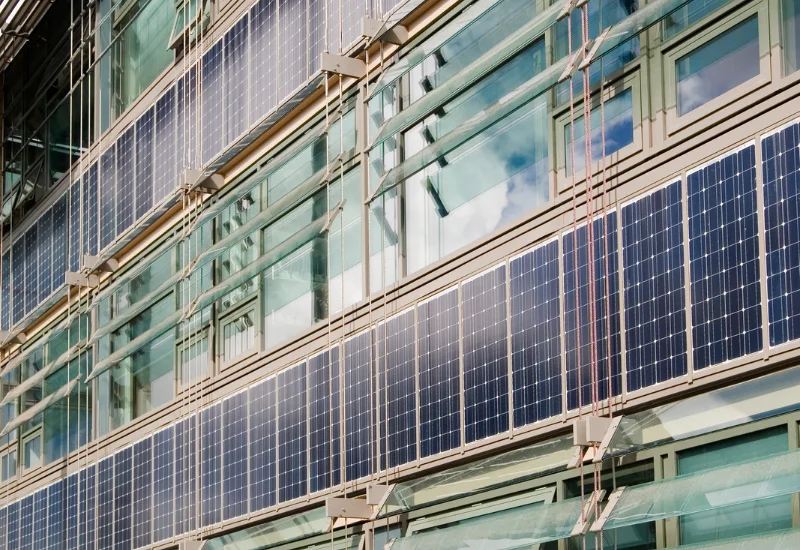
Sustainable Workspace Design is the need of the hour, as we move towards a more environmentally-conscious world. In order to create a workspace that is sustainable, it is important to focus on a few key elements.
Firstly, using green energy sources like solar, wind or hydro energy can significantly reduce our carbon footprint. Solar panels and wind turbines can be installed on the rooftop of the building to generate energy that can be used to power the workspace.
Secondly, using Environmentally-Friendly Materials like recycled or upcycled products can lead to a reduction in waste production and a lesser impact on the environment. Materials such as bamboo, cork, and repurposed wood can be used for furniture, flooring, and decor in the workspace.
Thirdly, efficient HVAC (Heating, Ventilation, and Air Conditioning) systems are essential to maintaining a sustainable workspace. Smart systems can be installed that monitor the temperature, humidity, and occupancy of the workspace and adjust accordingly to prevent energy waste.
Lastly, Eco-Friendly Commuting Options can be promoted to encourage employees to adopt environmentally conscious means of transportation. This can include incentives for biking, carpooling, or using public transportation.
The benefits of having a sustainable workspace are multifaceted. Not only does it reduce the carbon footprint and contribute to a cleaner environment, but it also saves energy costs in the long run. Employees working in such environments report increased productivity levels, improved physical health and reduced absenteeism.
In a nutshell, a sustainable workspace is a reflection of a company’s values and responsibilities towards the environment. It not only attracts eco-conscious employees but also creates a positive work culture that helps employees feel good about the work they do. It is time to make sustainability a priority in our workspaces because our planet and our employees deserve it.
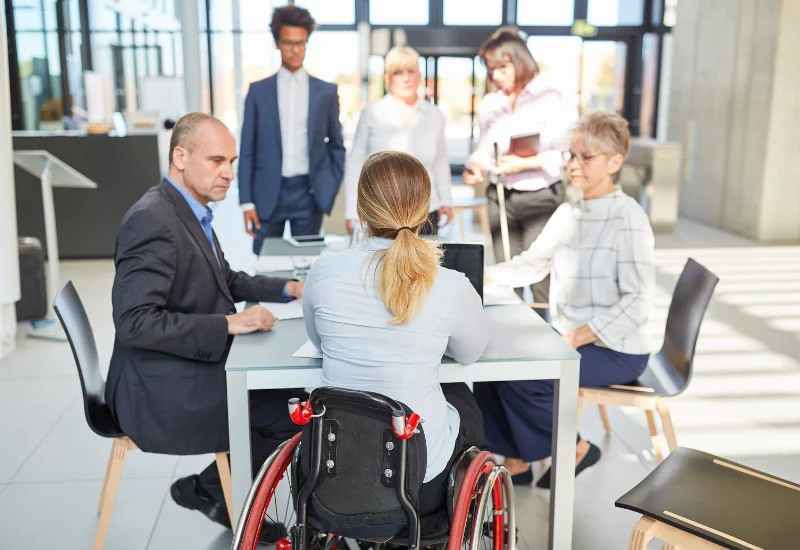
The Inclusive Workspace Design trend focuses on creating a workspace that caters to the needs of a diverse workforce. Such a design includes accessibility features such as ramps, elevators, and wide doorways to accommodate employees with disabilities. Adaptive equipment and furniture like adjustable desks and chairs are also imperative to offer comfort to people with different physical abilities.
An inclusive workspace also fosters diversity and inclusion through initiatives like cultural celebrations, diversity training, and employee resource groups. Such measures not only encourage employees to bring their authentic selves to work but also promote a sense of belonging and representation.
Additionally, the importance of mental wellbeing is emphasised in inclusive workspace design. Ergonomic furniture, calming colours, and quiet spaces provide employees with an environment conducive to mindfulness and relaxation.
The benefits of inclusive workspace design are numerous. It ensures that every employee feels valued and can work in a comfortable environment, leading to high productivity and low turnover rates. It also promotes a culture of respect, empathy, and collaboration, resulting in a harmonious and cohesive workplace.
Innovative workspace design is the perfect solution to lure back employees to the office. These designs offer a range of benefits, including increased collaboration, enhanced creativity, and boosted productivity. By encouraging employee engagement and fostering a positive work environment, innovative workspace design can also help to improve morale.
Whether it’s through biophilic designs that incorporate natural elements or flexible workstations that cater to different working styles, innovative workspace design can create a space that responds to the needs of the employees.
Companies that invest in technology-assisted workspace design can look forward not only to a more efficient and connected office but also to happier and more motivated employees. As more companies begin to recognize all the benefits that innovative workspace design can bring, it’s clear that the trend is here to stay.
By investing in innovative workspace design, companies can give themselves a real edge over their competitors while also benefiting their bottom line. So, don’t wait any longer – join the trend today and experience the many benefits that innovative workspace design can offer!
The reception is the first thing employees and visitors will see when they enter your office. Modernize your reception with a digital visitor management system. Try out Vizito for free during a 14-day trial. Chat with us or book a demo to discuss how Vizito can help you improve your reception.